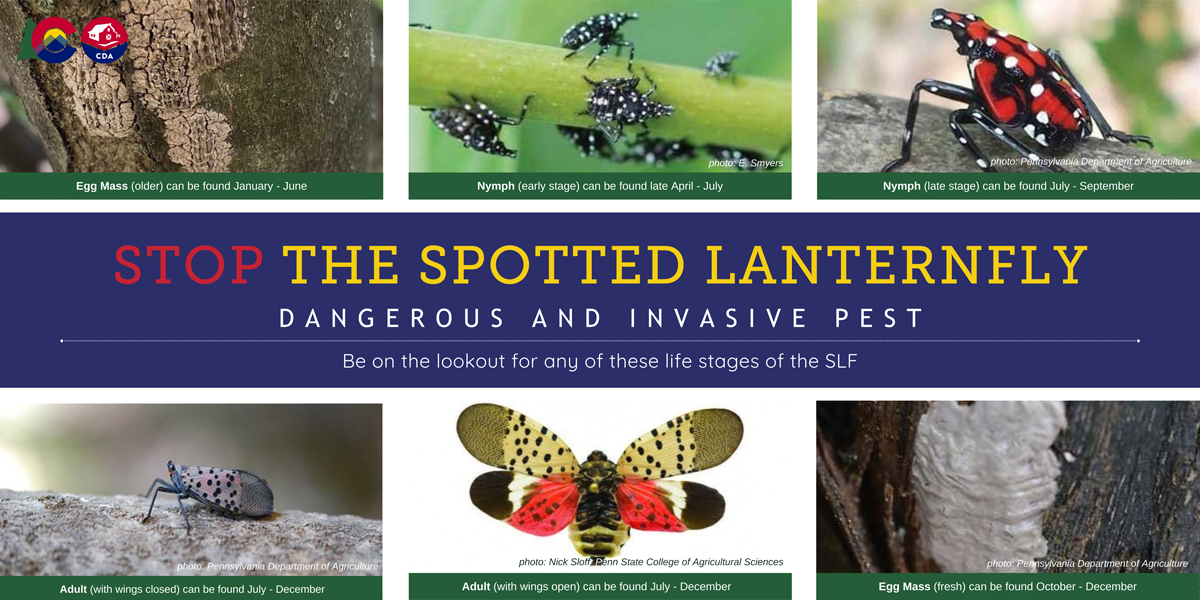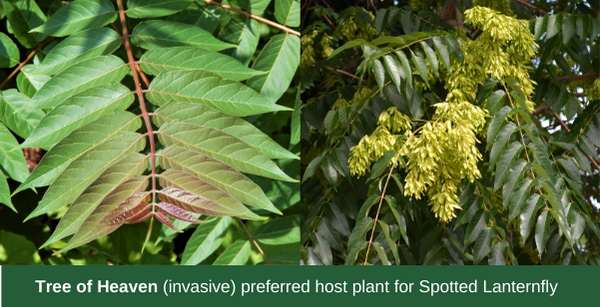SLF can be found on a wide variety of host plants and lay eggs on almost any tree.
Young nymphs can be found in numbers, usually on new plant growth, do not yet fly but can jump long distances, are black with white dots, and are smaller than half an inch.
Adults prefer to lay eggs and are commonly found in high numbers on Black Walnut and Ailanthus trees (aka tree of heaven).







